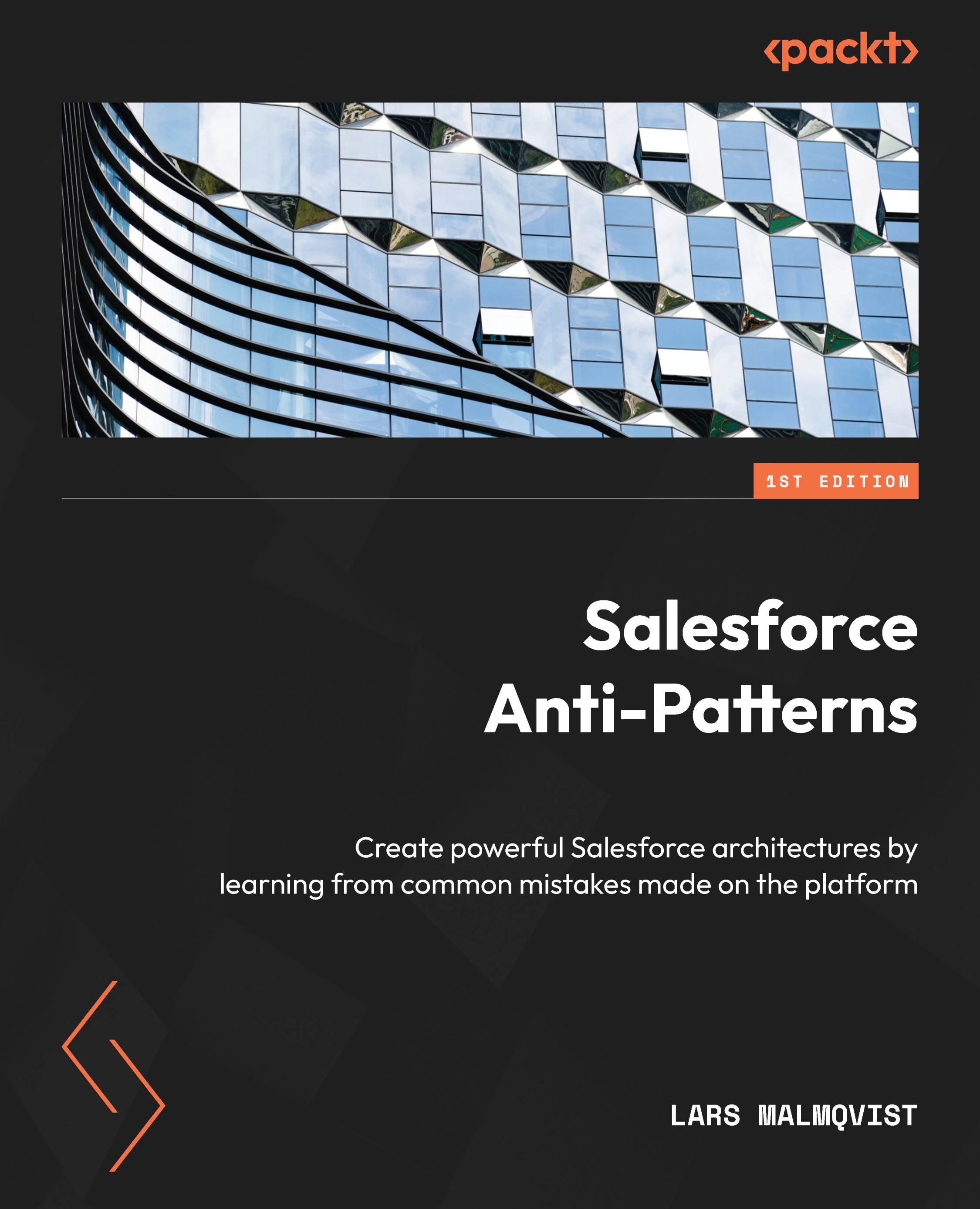Knowing the takeaways
In this section, we will abstract a bit from the specific patterns and instead, try to pull out the wider learning points that you can use in your day-to-day work as a Salesforce architect or when preparing for the CTA Review Board.
When architecting Salesforce solutions, you should be mindful of the following:
- Many organizations are internally siloed and political, and, in these kinds of organizations, the default mode of operation may be to develop Stovepipes or Big Balls of Mud.
- To avoid this, you as a Salesforce architect need to push strongly for countermeasures.
- This will include pushing for strong architecture governance and coordination on Salesforce projects, including establishing relevant governance forums to coordinate activities, and the right technical standards and practices to ensure everyone is building in a consistent way.
- You need to secure enough business support for these initiatives to make them enforceable when things...
































































